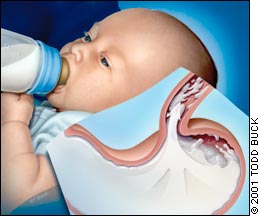
Am Fam Physician. 2001;64(11):1789

In this issue, AFP is restarting its series called “Putting Prevention into Practice: An Evidence-Based Approach.” On page 1881 you’ll find the first of a new batch of prevention-focused case studies. This piece, called “Counseling for Tobacco Cessation,” is written by Martin C. Mahoney, M.D., Ph.D., and Carlos Roberto Jaén, M.D., Ph.D., Department of Family Medicine, State University of New York at Buffalo. It opens with a brief case study followed by a multiple-choice question pertaining to the appropriate preventive measures for the case described. The evidence-based answer appears on the following page, along with a discussion summarizing the evidence supporting the answer.
The answer to the question about the case study in this issue is based on recommendations presented in the U.S. Public Health Service (PHS) Clinical Practice Guideline, “Treating Tobacco Use and Dependence.” This guideline was an update of the 1996 “Smoking Cessation” Clinical Practice Guideline No. 18, from the Agency for Health Care Policy and Research (AHCPR, now known as the Agency for Healthcare Research and Quality [AHRQ]). The original guideline was updated to include new, effective clinical treatments for tobacco dependence that have become available since the original guideline was developed. The complete guideline is available online atwww.surgeongeneral.gov/tobacco/default.htm.
AFP’s “Putting Prevention into Practice” series of case studies, named after the AHRQ’s program called “Put Prevention into Practice,” or PPIP, originally debuted in the April 1, 2000, issue. It included case studies on five prevention-oriented topics: pneumococcal and influenza vaccination for adults, screening for idiopathic scoliosis in adolescents, colorectal cancer screening, and screening for iron deficiency anemia. The series was designed to help family physicians become more knowledgeable about ways to incorporate evidence-based preventive care into patient encounters. The series was drawn from evidence collected by the U.S. Preventive Services Task Force (USPSTF) and the second edition of the “Clinician’s Handbook of Preventive Services,” part of the AHRQ’s PPIP program.
The USPSTF is a government-appointed panel of independent experts first organized in 1984 to conduct systematic reviews of the evidence establishing the effectiveness of clinical preventive services. The first USPSTF “Guide to Clinical Preventive Services” was published in 1989. The second edition of the guide, published in 1996 by the second generation of the task force, evaluated more than 200 preventive interventions for 70 conditions. Earlier this year, the third USPSTF, convened by AHRQ in 1998, began releasing new assessments and updates of previously issued recommendations. Individual task force reports and recommendations, which will be released over the next several years as they are completed, are available on the USPSTF Web site (www.ahrq.gov/clinic/uspstfix.htm).
The AHRQ’s PPIP program disseminates the USPSTF recommendations to clinicians, policy makers and patients in a variety of formats, and AFP has published a mini-series of “Putting Prevention into Practice” case reports based on the recommendations.
AFP will continue its publication of the “Putting Prevention into Practice” series based on the recommendations released by the USPSTF. However, one new twist has been added: the case studies are now part of AFP’s CME quiz. After you read the case in this issue, you can answer the “Clinical Quiz” questions on page 1807.